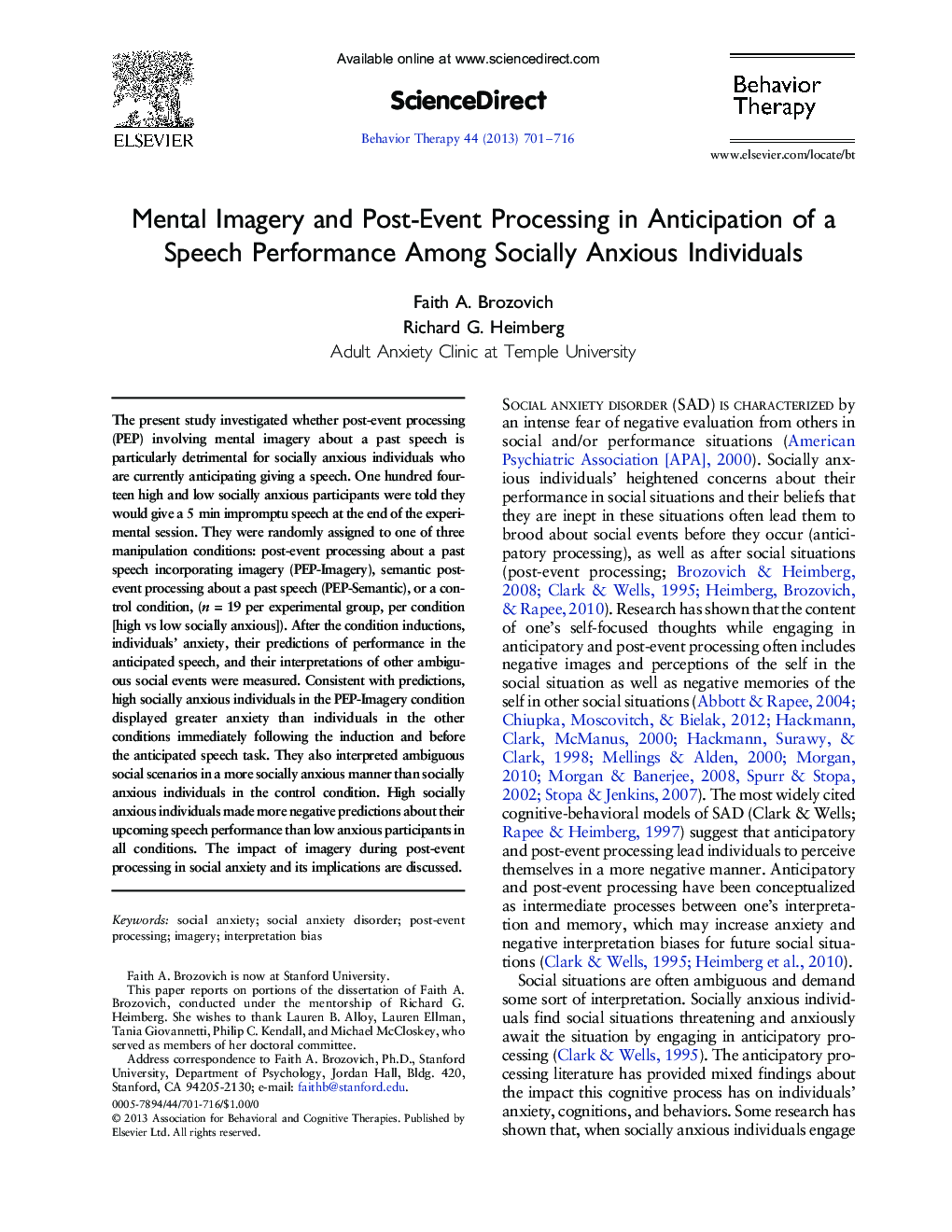| Article ID | Journal | Published Year | Pages | File Type |
|---|---|---|---|---|
| 901390 | Behavior Therapy | 2013 | 16 Pages |
•We compare imagery vs. semantic post-event processing in socially anxious subjects.•Socially anxious in imagery post-event processing task demonstrated higher anxiety.•Socially anxious generated more negative predictions about an upcoming speech.•Socially anxious in imagery post-event processing task had biased interpretations.
The present study investigated whether post-event processing (PEP) involving mental imagery about a past speech is particularly detrimental for socially anxious individuals who are currently anticipating giving a speech. One hundred fourteen high and low socially anxious participants were told they would give a 5 min impromptu speech at the end of the experimental session. They were randomly assigned to one of three manipulation conditions: post-event processing about a past speech incorporating imagery (PEP-Imagery), semantic post-event processing about a past speech (PEP-Semantic), or a control condition, (n = 19 per experimental group, per condition [high vs low socially anxious]). After the condition inductions, individuals’ anxiety, their predictions of performance in the anticipated speech, and their interpretations of other ambiguous social events were measured. Consistent with predictions, high socially anxious individuals in the PEP-Imagery condition displayed greater anxiety than individuals in the other conditions immediately following the induction and before the anticipated speech task. They also interpreted ambiguous social scenarios in a more socially anxious manner than socially anxious individuals in the control condition. High socially anxious individuals made more negative predictions about their upcoming speech performance than low anxious participants in all conditions. The impact of imagery during post-event processing in social anxiety and its implications are discussed.
